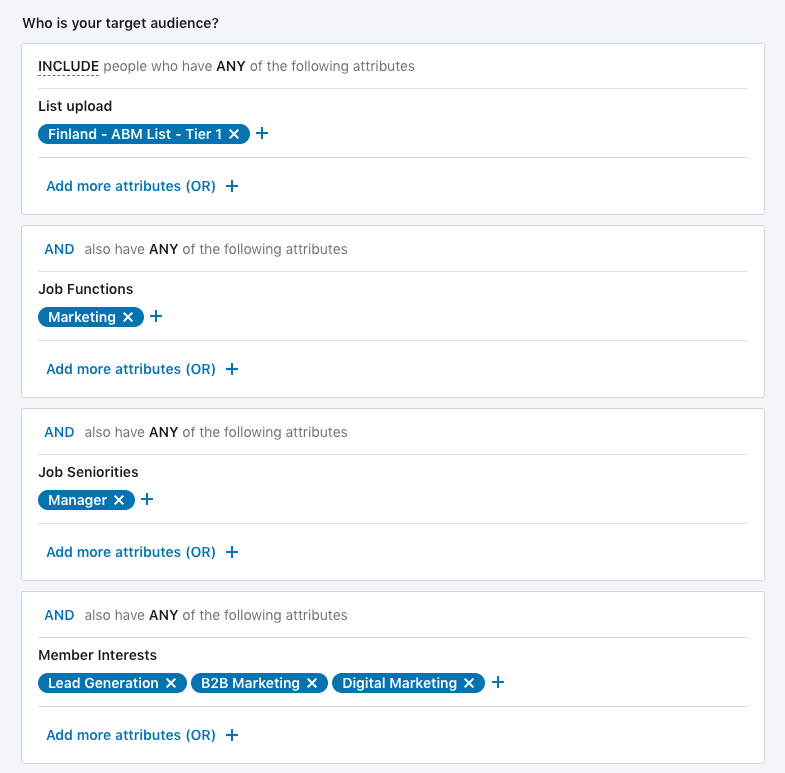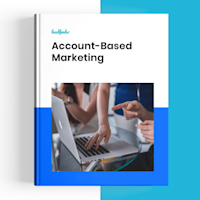Account-based marketing. Account-based selling. Account-based everything.
Whatever you want to call it, it’s all the rage.
Stop selling to individuals — start selling to accounts. Simple.
But for many, it’s easier said than done. Particularly if you’re currently reliant on inbound marketing and deal with individual leads.
How do you find and approach a contact at a company that has engaged with your content, when you don’t know the actual person at the company who engaged with it?
“This isn’t a real lead, we don’t know the person who engaged with our content. It’s useless.”
We hear this quite a bit at Leadfeeder. And we get it.
Switching from targeting individuals to targeting accounts can take a shift in mindset. But when you do it well, it pays dividends.
I want to show you exactly how we do account-based marketing and sales at Leadfeeder.
And not just to close a couple of small deals. This is the story of how we won the biggest deal in the company’s history.
It involves cold outreach, account-based retargeting, social selling, direct mail, and some tight alignment between sales and marketing.
Here’s how it went down.
Note: Ready to ramp up your ABM efforts to improve your B2B marketing and sales? Leadfeeder can help. Try it free.
Building our outbound sales team
We launched our outbound sales team at Leadfeeder in 2019.
The goal wasn't to replace our inbound sales, but to complement it.
While inbound sales focus on training the high quantity of leads that sign up for a free trial of Leadfeeder, outbound sales focus on reaching out to a small number of accounts with high revenue potential.
The approach allows us to have both an inbound and outbound pipeline to maximize growth.
You can read the full story of how our outbound team got started, but, to cut a long story short, to begin with we defined our Ideal Customer Profile (ICP), Buyer Personas and built a list of target accounts.
The team partnered with Vainu to generate a list of a few thousand companies in Finland that matched our criteria.
Et Voila, we had our targets.
Identifying accounts with intent
The outbound sales team began by manually reaching out to contacts at these accounts over email, phone, and social media. The aim was to start building relationships.
In addition, we started layering in intent data to help target accounts who were already interested in Leadfeeder.
To do this, we built Custom Feeds in Leadfeeder that matched our ICP.
This can be done one of two ways:
Use Leadfeeder’s built-in filters to create feeds that only show companies matching those criteria, such as Location, Employee Count, Industry, etc.
Use Leadfeeder’s Imported Lists to upload your list of Target Accounts from a CSV, and Leadfeeder will detect when one of these accounts has visited your website.
These feeds then identified any companies visiting our website that matched our ICP. Sweet! Next, we did two things to fit this into our current process:
We set up alerts via email and Slack so the team would be notified when target accounts visited our website
We set up an automation that created the accounts on Pipedrive

In early 2019, just a couple of months after creating our outbound team, we identified a White Whale anonymously browsing our website.
The hunt was on. 🐋
As soon as the team identified the company on our website, we created a Pipedrive deal.

Now every time our White Whale visited the Leadfeeder website, it would be synced directly to a corresponding deal in our CRM.

Kristian Karila, one of Leadfeeder’s Account Executives, first reached out to our Whale in Spring 2019.
He used the data gathered from the website visits identified in Leadfeeder and a connection he had on LinkedIn, to find a target.
The conversations were positive, however Kristian’s contact wasn’t looking to buy a solution like Leadfeeder at the time. No deal.
But … multiple people from our Whale kept visiting the Leadfeeder website. He knew there was still a potential buyer there.

So Kristian kept an eye on the content they were consuming.
And he continued to build the relationship.
Over the course of 2019, Kristian engaged with our Whale on social, email, and phone, offering any help and advice he could.
He used the time to understand their marketing and sales strategies and the challenges they currently faced. He found out what their current marketing toolstack looked like, to work out how Leadfeeder could help provide a solution.
Launching account-based marketing campaigns
In late 2019, the marketing team got involved.
Yeah, I know what you sales teams are thinking. Uh oh.
But this wasn’t about swamping the sales team with hundreds of leads or sending thousands of automated emails.
This was about sales and marketing alignment.
We began by tiering our target account list. This meant we could focus our marketing campaigns on the target accounts with the highest potential value.
We used our tiered account list and data exported from Leadfeeder’s Custom Feeds to build CSVs and target these accounts on LinkedIn.
Our buyer personas allowed us to refine these account lists by job title, function, seniority, and interest, in LinkedIn’s campaign manager.

Now we had an extremely tight list of companies to target on LinkedIn, enabling us to engage with the exact people our outbound sales team needed to talk with.
Time to get started. We launched a selection of ebook campaigns using LinkedIn Lead Gen forms, promoting a variety of content about account-based marketing.

Within a few weeks a new contact from our Whale had downloaded an ebook.
And not just any contact. The exact persona our sales team needed to connect with.
Kristian used the ebook they’d downloaded, combined with the website visit data for our Whale’s account on Leadfeeder, to build a picture of the problems they were looking to solve.
Then he reached over the phone.
He started by discussing the ebook they’d downloaded and the problems it was helping them to address. With the research he’d already done, the conversation quickly turned to their existing toolstack, how Leadfeeder could fit in and feed valuable intent data to their team.
The personalized pitch made an instant impact. Within a week our White Whale had booked a demo of Leadfeeder.
Account-based retargeting campaigns
So the marketing team generated an awesome lead.
Time to party, right?
Wrong. We hadn’t closed the deal yet.
And here’s the thing about sales and marketing alignment. It doesn’t work if you’re both focused on different things.
So at Leadfeeder, we both focus on the same thing — revenue.
While Kristian built a strong relationship with our Whale, the marketing team continued to ensure we were top of mind with our target.
Following the successful first demo, we used Reachdesk to send some personalized direct mail to our lead.
Our LinkedIn account retargeting campaigns continued with more content.
Leads at our Whale continued to download content and engaged with a series of webinars we ran to help teams navigate COVID-19.
And they continued to visit our website.

Closing the deal
As with most enterprise deals, the buying cycle was a long one.
But Kristian was able to use the additional content our Whale consumed and their browsing history to keep a pulse on the deal.
He used these intent signals to reach out at the right time, and discuss topics and problems that were relevant to our Whale.
In particular, integrations. Not only did this help our Whale understand how Leadfeeder would fit into their current processes and ensure their team continued to push it along internally, it also set them up to hit the ground running as soon as the deal was won.
The deal closed a couple of months later, becoming the largest in Leadfeeder’s history.
The moral of the story
It took two teams just over a year to identify, nurture, and win one account.
Was it worth it? Absolutely.
We were able to focus marketing and sales resources on accounts that are most likely to generate us revenue.
In fact, our account-based marketing campaigns have a payback period several times faster than other paid marketing channels.
But this isn’t news.
87% of marketers that measure ROI say account-based marketing outperforms every other marketing investment.
Quite simply, when you do ABM right, it works.
If you’re thinking about account-based marketing and sales but don’t know where to begin, start with the steps outlined in this article.
Define your ICP and Buyer Personas
Build your Target Account List
Identify which accounts are already browsing your website
Start selling to these accounts first
Use intent data from your website to personalize outreach
Align with marketing for account-based retargeting
You might just land a couple of white whales too.
Note: Ready to ramp up your ABM efforts to improve your B2B marketing and sales? Leadfeeder can help. Try it free.
Now that you're here
Leadfeeder is a tool that shows you companies that visit your website. Leadfeeder generates new leads, offers insight on your customers and can help you increase your marketing ROI.
If you liked this blog post, you'll probably love Leadfeeder, too.
Sign up








